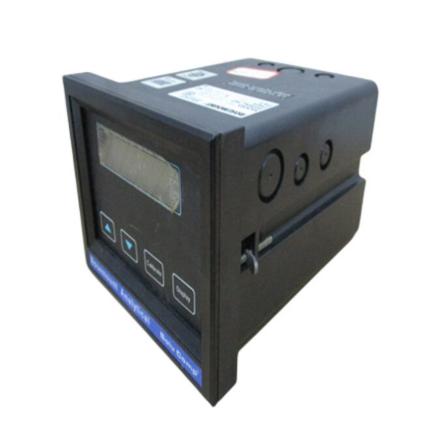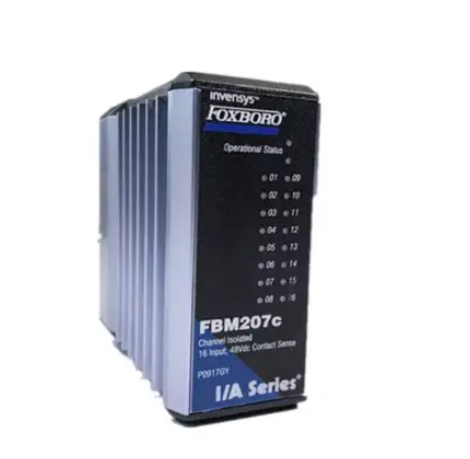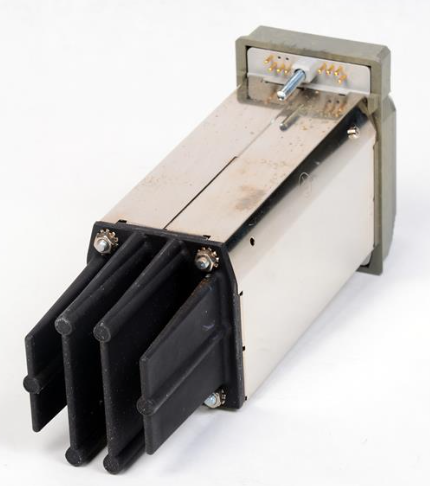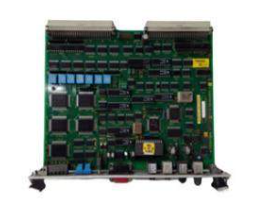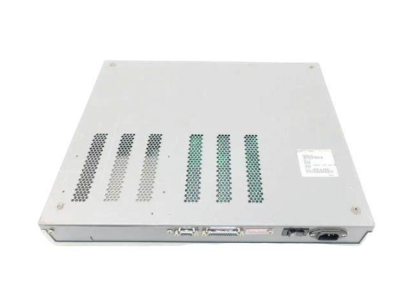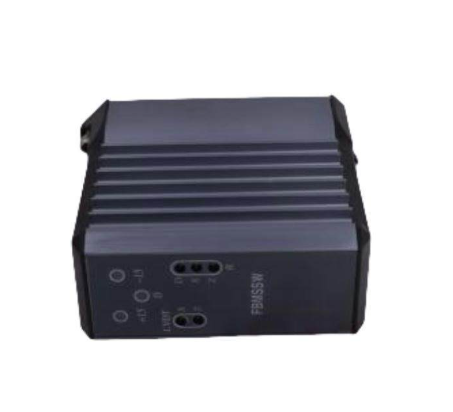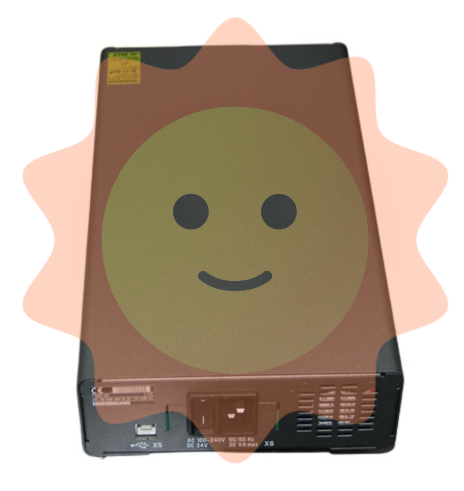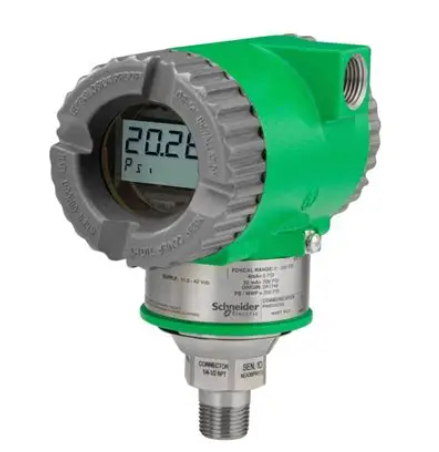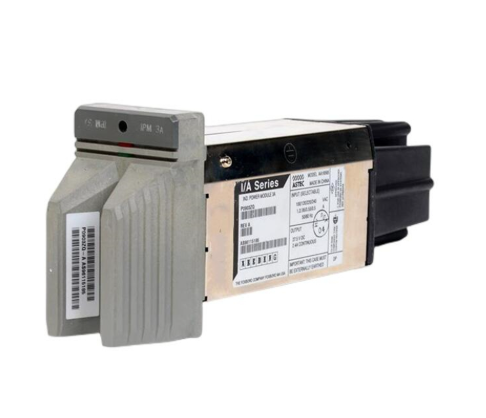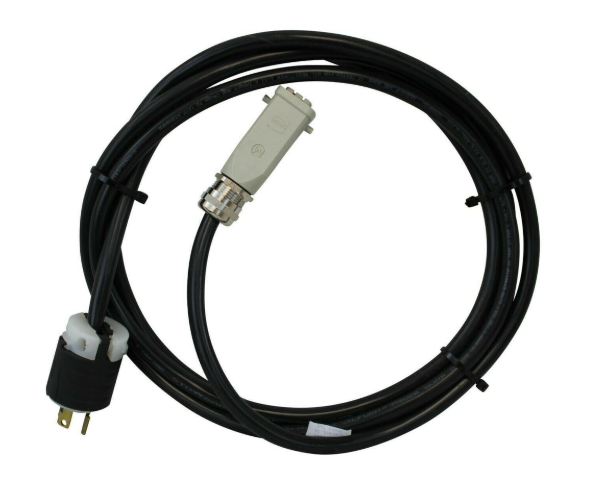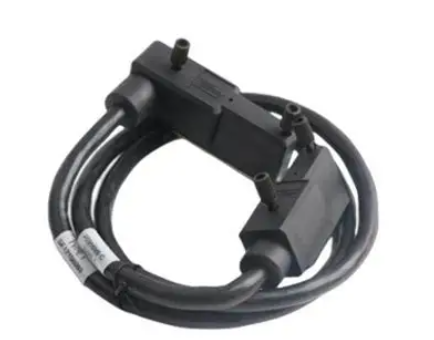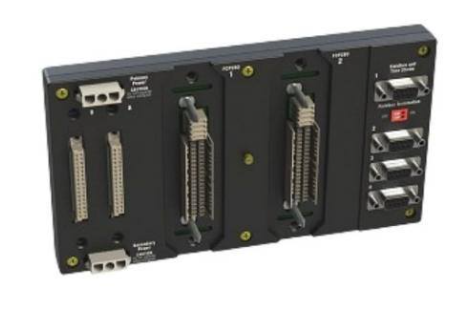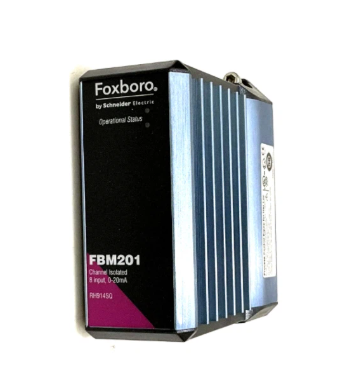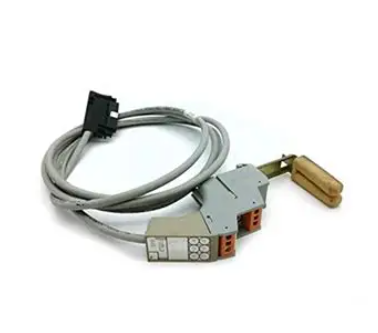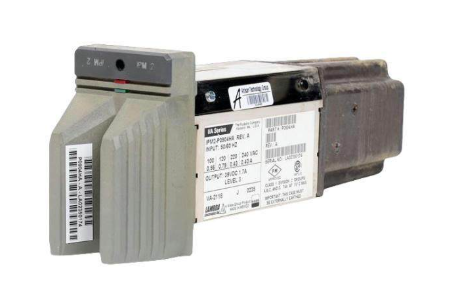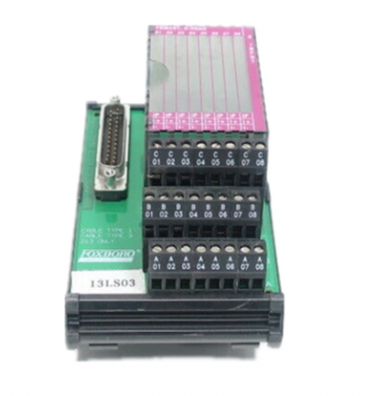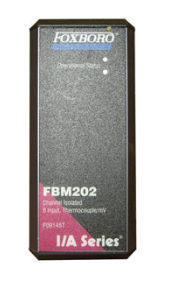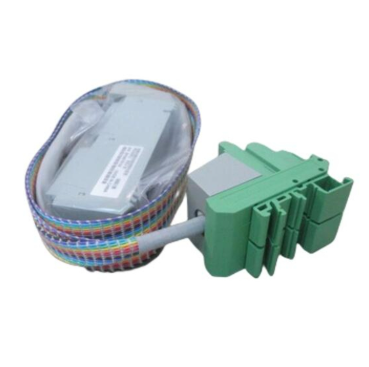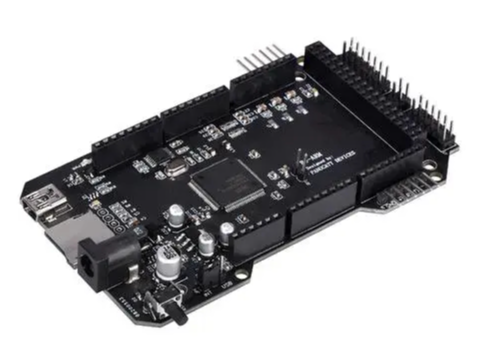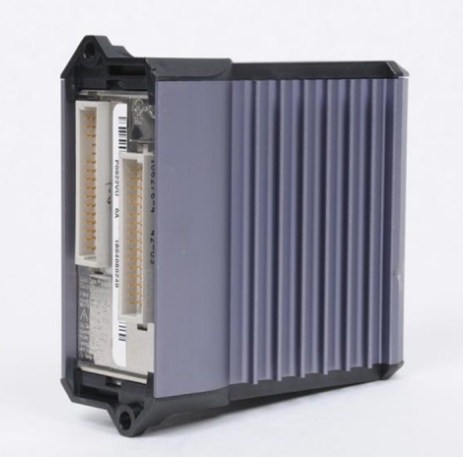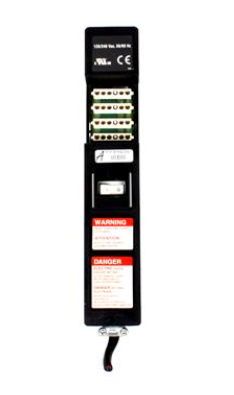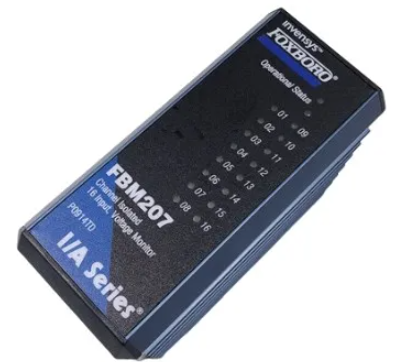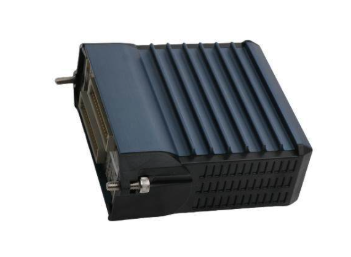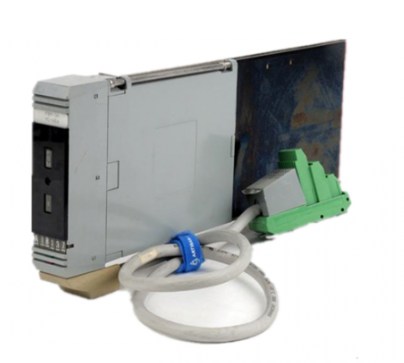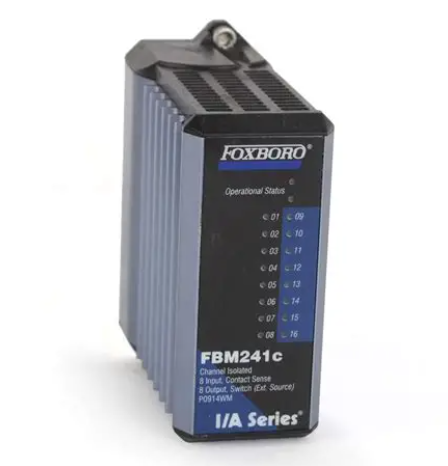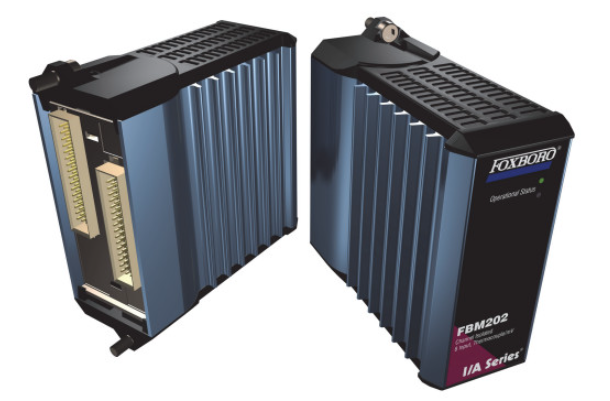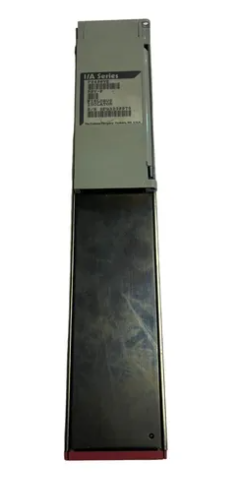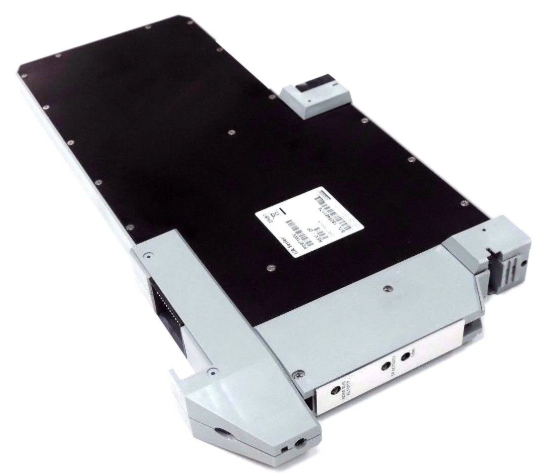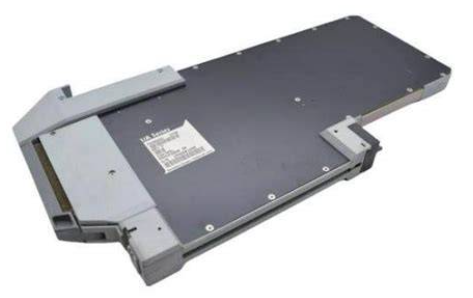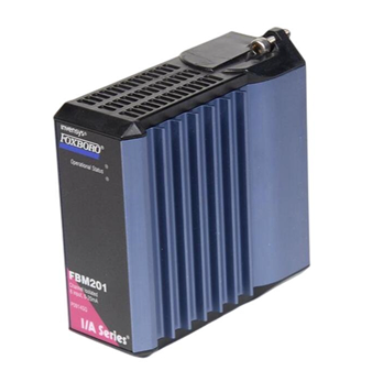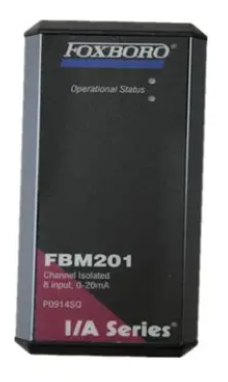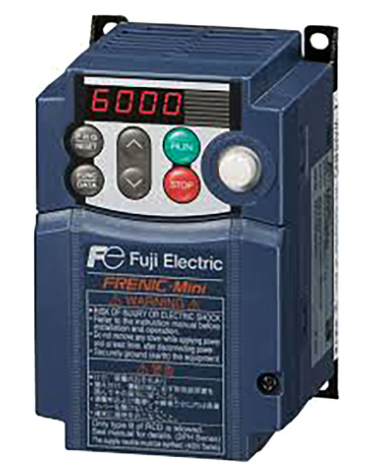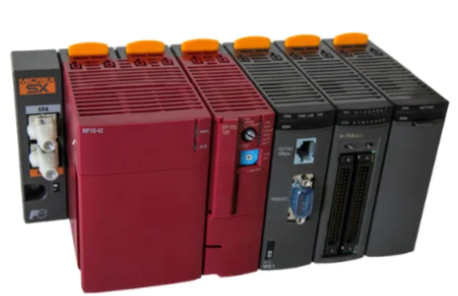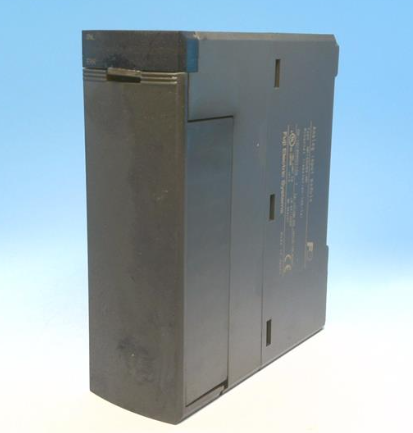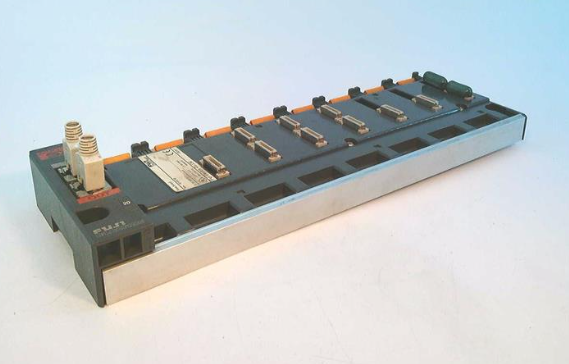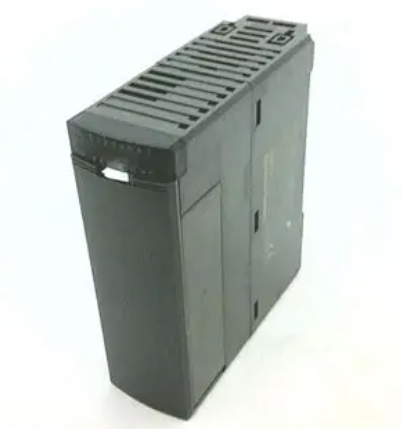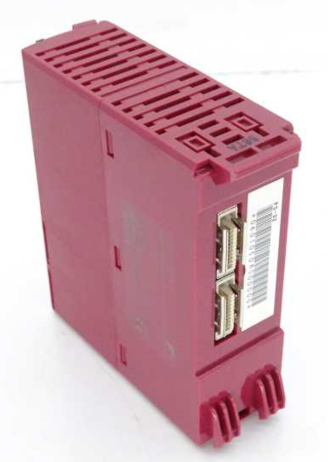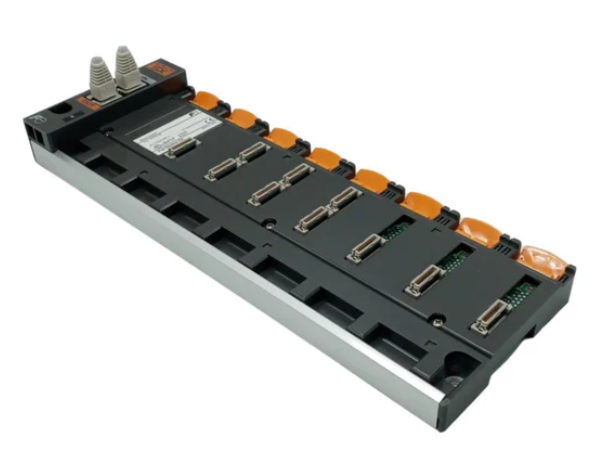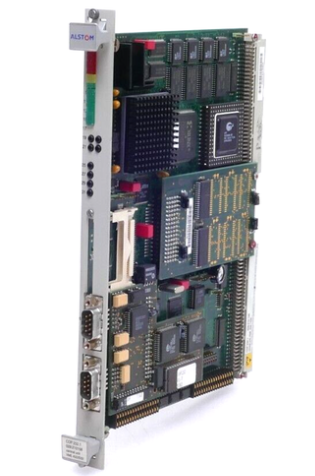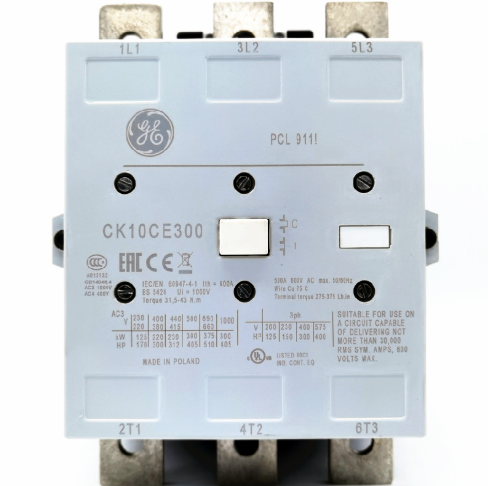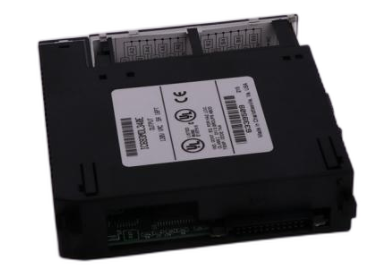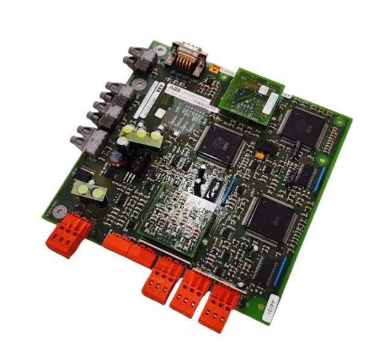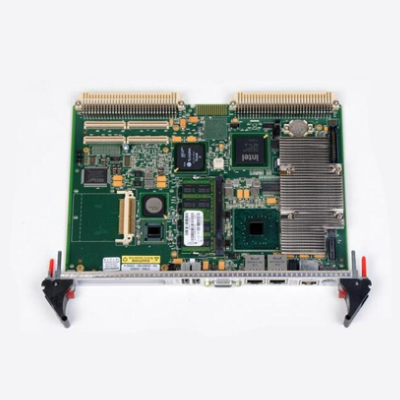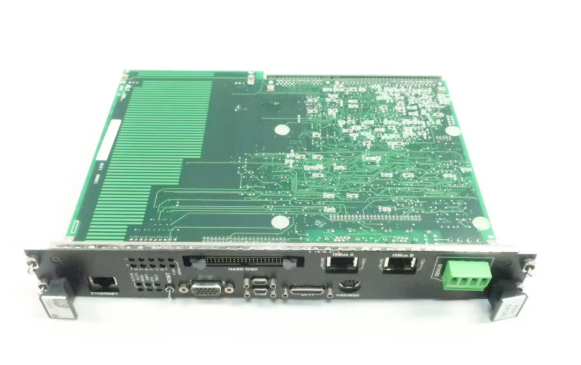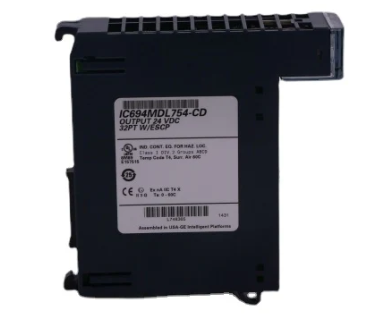Slurry price resumption and deduction, this round of costs into the decline cycle
First, pulp price resumption and deduction: this round of cost into the decline cycle
1.1. Stock price fluctuation
Since 2017, pulp prices have risen three times: 2017.1-2018.1 (supply side) : Supply-side reform has led to a sharp contraction of downstream paper production capacity, and the price of terminal pulp has driven up upstream paper prices; 2020.11-2021.5 (demand side) : After the impact of the first wave of the epidemic, the demand for pulp and paper varieties accumulated in the first half of the year began to be released. Superimposed from the situation that the epidemic in China has been controlled but overseas has gradually gotten out of control since Q3 2020, the export share of consumer goods has increased significantly, driving the export demand for related paper products. Overall, pulp prices are rising driven by the increase in demand for terminal papermaking; 2021.11-2023.1 (supply + demand superposition) : natural disasters on the supply side led to the suspension of pulp mill production, the outbreak of the Russia-Ukraine war led to the disruption of Northern Europe + Russia conleaf pulp production capacity, and the relaxation of overseas epidemic prevention and control on the demand side caused a rapid rebound in demand, pushing up the price of pulp.
2017.1-2018.1 Upward (supply side) : Supply-side reform led to a sharp contraction of downstream paper production capacity, and the skyrocketing price of terminal pulp system led to a rise in upstream paper prices. In 2017, the cumulative investment growth of fixed assets in the paper industry slowed down significantly, and the growth rate was below 10%. 2019.1-2020.1 Downlink (supply side) : After the supply-side reform, upstream paper enterprises plan to release a large amount of production capacity during this period, resulting in a decline in the price of pulp and paper varieties, lowering upstream costs; 2020.11-2021.5 Upward (demand side) : After the impact of the first wave of the epidemic, the demand for pulp and paper varieties accumulated in the first half of the year began to be released. Superimposed from the situation that the epidemic in China has been controlled but overseas has gradually gotten out of control since Q3 2020, the export share of consumer goods has increased significantly, driving the export demand for related paper products. Overall, pulp prices are rising driven by the increase in demand for terminal papermaking; 2021.5-2022.3 Down (supply side) : pulp prices are down, mainly because overseas pulp plants are expected to put into operation, and supply is expected to keep up after the demand is completed;

2021.10-2022.12 Upward, high sideways (supply + external demand) : Pulp prices began a new round of rising trend, we believe that this round of rise is mainly due to the continuous tightening of the supply side and the rebound of overseas demand. As of December 16, 2022, the CFR outer price of coniferous pulp (Chilean Silver Star) and broadleaf pulp (Brazilian goldfish) was $940 / ton and $820 / ton (broadleaf pulp was lowered by $40 on December 13). (1) Supply side contraction: Under the influence of natural disasters (such as floods in Canada, fires in Chile), regional strikes (Finland's leading UPM strike nearly 4 months), supply chain bottlenecks, and commodity embargo caused by the Russia-Ukraine incident, the supply of raw wood chips is in short supply, pulp mills continue to reduce, and there is basically no new large-scale trade pulp capacity in the world in 2019-2020. Some of the planned production capacity continues to be delayed due to the impact of the epidemic.
(2) Demand side: Overseas epidemic prevention and control is relaxed, and terminal demand in Europe is facing a strong rebound. Driven by supply and demand, the price of European pulp has risen strongly, and because of the higher price of European pulp, wood pulp has priority to be sent to Europe rather than China, so China's imports are at a low level, domestic supply and demand are also in a tight balance, and pulp prices remain high. The overall raw material end has caused great pressure on the downstream finished paper enterprises, and the prosperity continues to be depressed, and the gross profit of double adhesive paper, coated paper, and white cardboard paper has significantly decreased or even lost money.
1.2, this round of downward inference: supply side production capacity release, 23 years of broadleaf pulp increased 10% capacity increment
According to public information, the production of two million-ton broadleaf pulp projects that were significantly delayed by the epidemic in the early stage is more certain: Chile Arauco 1.56 million tons of broadleaf pulp project put into production in January 23, UPM in Uruguay 2.1 million tons of broadleaf pulp project is expected to put into production in 2023Q1, according to the rhythm, is expected to gradually climb from 23Q1-Q2 release, 2023 from the supply tight pattern is expected to gradually improve. In addition, according to public information, Suzano Brazil's 2.55 million tons of broadleaf pulp project in 2024 and Pacacel's 1.8 million tons of broadleaf pulp project in 2025 are also expected to be put into production one after another, and the supply of more than one million tons of broadleaf pulp is expected to be better. Conifer pulp expansion is relatively weak, Sodra from the end of 2022 to the beginning of 2023 only 10 tons of renovation projects into production, 2023 Finland Metsa Fibre Kemi renovation is expected to add 800,000 tons of capacity.
Weaker overseas demand more certain: Against the backdrop of high inflation and Fed rate hikes, weaker external demand is already visible. In Europe, in August 22, the European port drift needle pulp inventory began to show a significant month-on-month upward trend, compared with the European port wood pulp inventory of 214,000 tons in July, an increase of 9.4% in August to 234,000 tons, and continued to increase 1.6% in September to 238,000 tons, close to the inventory level in March this year. We believe that the increase in port inventory is mainly due to the weakening of European demand, the eurozone manufacturing PMI has dropped below 50 (49.8) since July and still shows a downward trend, PMI data in December 22 was 47.8, and it is expected that the port inventory of European drift needle pulp will still increase. The US manufacturing PMI also showed a downward trend, and the PMI data in December 22 was 46.2, and the demand was weakened.

Domestic demand is expected to gradually repair in 2023: this year, Changshu Port and Qingdao Port pulp stocks are still basically maintaining a differentiated trend, and the overall inventory in November fell slightly by 0.84% from October, slightly loosening, but still at a high level since 2017. In terms of imports, broadleaf and coniferous pulp imports have remained relatively low since March, reaching the lowest value of 905/533,000 tons in July this year; The import volume increased significantly in August and September, and we expect that the main reason is that the pulp price from April will lead to domestic pulp and paper enterprises to stockpile pulp, and the wood pulp to Hong Kong is lagging behind; In October, imports fell back to 971/562,000 tons. On the one hand, the low import volume is due to weak domestic demand, and on the other hand, the higher price of overseas pulp has led to more wood pulp shipments to overseas. Although driven by the optimized conditions for epidemic prevention and control, the demand side is expected to recover slowly, but the short-term uncertainty is strong, and it is expected that the repair needs to "exchange time for space" in 2023.
According to Hawkins Wright's statistics, in 2020, the weighted average cost of coniferous pulp and broadleaf pulp (BSKP and BHKP) in all regions of the world is about US $510 / ton and US $340 / ton respectively. Historically, the average cost of coniferous pulp is basically in the range of US $400-600 / ton. The cost of broadleaf pulp basically falls in the range of $300-450 / ton. Due to the shortage of wood chips, we reasonably expect an increase in costs in 2021-2022, with historically high costs in 2022. We found that the profit of wood pulp has a relatively obvious periodicality, among which broadleaf pulp is more obvious. According to the historical cycle change, the current profit of coniferous pulp and broadleaf pulp in 2022 basically reached the top of the current period, and the upstream pulp mill has a large profit and a large space for decline. In 2023, the profit of wood pulp is expected to enter a downward stage along the cycle evolution. And most of that comes from falling prices.
In summary, the supply side based on more than one million tons of broadleaf pulp project trial production, pulp supply tension gradually eased; Overseas demand side of the United States PMI weakness or will enter the recession cycle, the deterioration of the trade pattern under the influence of the European war, the gradual reflection of weak demand, it is expected that the short-term downward inflection point of overseas demand is clear, and domestic demand repair is slower than the decline in external demand, so the overall demand side is difficult to continue to support the high price; The profit situation of wood pulp is expected to enter the downward stage of profit brought about by the fall in pulp price. Therefore, although the pulp price in 2022 is affected by the previous stage to maintain high volatility, we expect 2023Q1 to continue to significantly decline, the rhythm is a small number of downward, 2023 outer price as a whole or down about $150-200.

Second, bulk paper: pro-cyclical market, the right side of the culture, the left side of the cloth packaging
2.1, cultural paper: small and medium-sized production capacity is gradually introduced, and supply and demand are weak
Demand side: According to ifind statistics, the consumption of coated paper in 2021 reached 5.79 million tons, an increase of 4.14%, the consumption of double-adhesive paper reached 8.65 million tons, a decrease of 2.05%, and the consumption of cultural paper is expected to be about 14.71 million tons in 2022. Supply side: Rising pulp prices increase the cost pressure of small and medium-sized enterprises, and under the influence of carbon peak and carbon neutral policies, the supply-side reform of the paper industry has accelerated significantly, and the emission reduction cost of small and medium-sized enterprises is higher, which accelerates the gradual withdrawal of small and medium-sized production capacity. According to statistics, in 2021, the double adhesive paper production capacity is 13.25 million tons, the new production capacity is 1.05 million tons (Sun Paper 550,000 tons, Asia-Pacific Sembo 500,000 tons), the coated paper production capacity is about 7 million tons, and there is no new production capacity. In 2022, about 1.8 million tons of new production capacity of cultural paper is planned to be put into operation, all of which are double-tape paper production capacity.
2.2. Box board corrugated paper: downstream e-commerce drives the growth of demand for packaging paper
Demand side: With the rapid development of downstream e-commerce, the demand for packaging paper is larger, and the overall demand for pulling box board corrugated paper is repaired. According to ifind statistics, the consumption of corrugated base paper in 2021 reached 29.77 million tons, an increase of 7.24%, and the consumption of box board paper 31.96 million tons, an increase of 12.65%. Supply side: The supply maintained a steady growth trend, and mainly concentrated in the top enterprises. The implementation of the "ban on waste" gradually phased out more small and backward production capacity, and after the small and medium-sized production capacity clearance industry pattern is continuously optimized, the head paper mill will gradually realize the low-end profitability. From January to November 2022, 4.25 million tons of corrugated cardboard has been put into production, and 5.5 million tons are expected to be added throughout the year, an increase of 41% year-on-year, and the production capacity will exceed 50 million tons by the end of 2022.
From January to November 2022, a total of 4.25 million tons of corrugated paper and box board paper have been put into production, and it is expected that the annual new production capacity will reach 5.5 million tons, an increase of 41%. New capacity continues to be released, and the pressure on the supply side continues to increase, while the downstream demand side shows a decreasing trend. From November to the end of December, there are still 3 corrugated paper and box board production lines in China, and it is expected that the new production capacity will continue to increase by 1.25 million tons, and the supply side pressure will be upgraded again. Box board industry concentration is high, Nine Dragons Paper, Liwen Paper, Mountain Eagle Paper, Sun paper production capacity accounted for 27%, 13%, 11%, 6%, capacity concentration CR4 is about 55%. From January to November 2022, the new production capacity reached 3.35 million tons (1 million tons of Shanying Paper, 1.2 million tons of Nine Dragons Paper, and 650,000 tons of Bohui Paper), and the industry concentration increased. The concentration of corrugated paper industry is low, Nine Dragons Paper, Golden Phoenix, Mountain Eagle Paper, Rongcheng Paper production capacity accounted for 11%, 5%, 5%, 3%, respectively, corrugated paper production capacity concentration CR4 is only 23%. From January to November 2022, the new production capacity reached 900,000 tons, and the industry concentration continued to increase with the new production capacity of leading paper enterprises.

2.3, Nine Dragons Paper Industry: packaging paper leading enterprise
Packaging paper leading enterprises. The company was established in 1995, headquartered in Dongguan City, Guangdong Province, and listed in Hong Kong in 2006. The main products are cardboard (cow cardboard, green cow cardboard, white cow cardboard and coated cow cardboard), high-strength corrugated core paper, coated grey white board, environment-friendly cultural paper, special paper, high-strength corrugated board, high-strength corrugated carton and pulp. At present, the total designed annual capacity of pulp and paper is 18 million tons, and the total designed annual capacity of packaging paperboard and carton is 1 billion square meters. The company has 9 papermaking bases in China (Dongguan, Taicang, Chongqing, Tianjin, Quanzhou, Shenyang, Leshan, Hebei, Hubei) and 8 packaging bases (Taicang, Dongguan, Tianjin, Chengdu, Shenyang, Zhangmuou, Quanzhou, Chongqing), and 1 papermaking base in Vietnam; 1 pulp mill in Malaysia; It also owns four pulp and paper mills in the United States (Rumford and Old Town, Maine; Biron, Wisconsin; Fairmont, West Virginia).
2.4, Mountain Eagle International: box board paper revenue proportion is the highest, corrugated paper gross margin is the highest
From the point of view of products, in 2021, box board paper revenue accounted for the highest proportion. The revenue contribution of box board paper, paper products and corrugated paper was 135.95/72.95/4.160 billion yuan, respectively, and the proportion of revenue was 41.15%//22.08%/12.59%. In terms of products, in 2021, corrugated paper has the highest gross profit margin. The top three gross profit rates are corrugated paper, other base paper and box board paper, and the gross profit rate decibels are 16.96%/16.93%/13.47%. Among them, the gross profit margin of corrugated paper in 2020 was 15.33%, which was improved in 2021.
According to the company's disclosure of operating data, in January 23, paper sales of 228,400 tons, year-on-year -51.56%; In February 23, paper sales of 430,700 tons, +27.82% (since May 21, except for November 21 peak), after the Spring Festival demand increased. In January 23, the packaging sales volume was 116 million square meters, year-on-year -37.44%; In February 23, the packaging sales volume was 143 million square meters, 17.13% year-on-year (the peak since May 22), and the demand increased after the Spring Festival. In January 23, the income of papermaking was 780.19 million yuan, the income of packaging was 408.32 million yuan, and the total income of papermaking and packaging was 1188.51 million yuan; In February 23, the income of papermaking was 1,430.33 million yuan, the income of packaging was 510.51 million yuan, and the total income of papermaking and packaging was 19,4084 million yuan. From January 21 to February 23, papermaking and packaging revenue as a whole showed periodic changes on an annual basis, with downward fluctuations before the Spring Festival and upward fluctuations after the Spring Festival.

By the end of 2021, Shanying International has a total of 5.87 million tons of existing production capacity in China, a total of 1.77 million tons of production capacity under construction, and a total of 3.1 million tons of planned production capacity. Among them, Jilinshan Company has continuously improved its domestic regional layout through self-construction and mergers and acquisitions. At present, it has built five papermaking bases in Maanshan, Anhui Province, Jiaxing, Zhejiang Province, Zhangzhou, Fujian Province, Jingzhou, Hubei Province and Zhaoqing, Guangdong Province, with a production capacity of about 6 million tons, ranking among the top three in the industry. The company's packaging plate enterprises are located in economically developed areas along the river and coast, close to the industry's head customer gathering place, and the industry radiates Jiangsu, Zhejiang and Anhui.
The company promotes the international strategic layout through the acquisition of recycled fiber resources, the deployment of advantageous markets and high-end paper varieties. The company continues to trade in the United States, the United Kingdom, Australia, Japan, the Netherlands and other major sources of recycled fiber, and distributes recycled pulp in Southeast Asia and Europe to ensure the high-quality supply of upstream raw materials. The company's participation in Nordic Paper and its holding subsidiary Phoenix Paper belong to the highly profitable paper segment. Nordic Paper has a total production capacity of 500,000 tons of high-end special pulp and paper, and Phoenix Paper has an annual production capacity of 300,000 short tons of multi-category cultural paper. Its main products are food greaseproof paper, special kraft paper, high-strength paper bags and cultural paper. Through the horizontal extension of the industrial chain, it further improves and optimizes the company's existing product structure, and effectively reduces the impact of fluctuations in domestic wrapping paper.
2.5, Sun paper: Sun paper bottom established, β and α resonance
Sun paper bottom is established, beta resonates with alpha. 2008 financial crisis, stock price decline; 2009-2010 "4 trillion" plan was introduced, the profit of paper enterprises recovered, the industry fixed investment increased, and the stock price rose; From 2011 to 2014, new production capacity was released intensively, overcapacity, and stock prices bottomed out. In 2015, the economy entered the poor side, the stock price was at the bottom, and the "buffalo" market rose and fell; 2016-2017 supply-side reform, stock prices up; In 2018, trade frictions hit economic expectations and exports, and stock prices fell; In 2021, the price of wood pulp and paper will rise, and the stock price will rise; At present, the bottom of the Sun paper industry is established, the paper β market and the Guangxi expansion α resonance.
Sun Paper industry is rich in categories, and the company carries out diversified strategic layout. When listed in 2006, the company's product line was limited to coated paper, uncoated textured paper, white board paper with gray background and white cardstock paper with partners. In 2011, we developed a series of dissolving pulp products, expanded the household paper business in 2014, and expanded the cow leather box board paper business in 2016. Sun Paper industry has cost advantages, and the purchase price of Sun paper wood pulp is better than the market level. The market price of wood pulp from 2017 to 2021 is 4792 yuan/ton, 5219 yuan/ton, 3510 yuan/ton and 4744 yuan/ton respectively, and the cost of wood pulp purchased by the Sun paper industry is 4218 yuan/ton, 5099 yuan/ton, 3299 yuan/ton and 4500 yuan/ton respectively, with a price difference of 200 to 500 yuan/ton. Taiyang paper industry has a certain cost advantage.

The price fluctuation of dissolved pulp and wood pulp is basically the same. In addition, dissolved pulp is used to prepare viscose staple fiber, and viscose staple fiber is a substitute for cotton flowers, which can be used in the garment and textile industry, so the supply and demand of dissolved pulp are closely related to the cyclical nature of viscose staple fiber, cotton and textile industry. In the second half of 2017, the production capacity of dissolved pulp was delayed, and the import of dissolved pulp was affected by the global economic pattern, so the price of dissolved pulp deviated from the price of wood pulp. In the past 22 years, all links of the dissolved pulp industry chain have shrunk. Among them, the contraction of the source end and the consumption end is more than 7%, the contraction of the manufacturing end is slightly more than 5%, the contraction of exports is less than 4%, and the cost of the downstream viscose factory to buy dissolved pulp is increased, and it is difficult to transmit downstream.
Third, special paper: demand is expected to continue to help support prices beyond expectations, cost decline & orderly expansion of production capacity, β and α
There are many sub-sectors of special paper. As the industry leader, Xianhe Shares cover many sub-sectors such as tobacco, decoration, food, Glasin, heat transfer, label release, etc. Wuzhou Special paper is deeply engaged in food wrapping paper and Glasin paper, and will expand to other fields in the future.
For the future 2-3 annual production capacity, we believe that there will be no imbalance between supply and demand pattern for the time being, which will lead to too fierce competition: (1) Wuzhou special paper new production capacity: 500,000 tons of food wrapping paper new production line has been put into production since the beginning of this year, sales have been verified, and downstream customers can fully digest; The new Gresin paper and liquid wrapping paper production capacity in 2023-2024, and the downstream demand for express logistics, takeout, tea and other consumer markets with good growth momentum, and the food and drink field faces the demand for paper instead of plastic. (2) New production capacity of Xianhe shares: there is no detailed paper type plan, and it is expected to be mainly added in food, medical, industrial and tobacco packaging; And Xianhe has flexible conversion capacity, according to sales production, can be flexible transfer according to market demand.
- EMERSON
- Honeywell
- CTI
- Rolls-Royce
- General Electric
- Woodward
- Yaskawa
- xYCOM
- Motorola
- Siemens
- Rockwell
- ABB
- B&R
- HIMA
- Construction site
- electricity
- Automobile market
- PLC
- DCS
- Motor drivers
- VSD
- Implications
- cement
- CO2
- CEM
- methane
- Artificial intelligence
- Titanic
- Solar energy
- Hydrogen fuel cell
- Hydrogen and fuel cells
- Hydrogen and oxygen fuel cells
- tyre
- Chemical fiber
- dynamo
- corpuscle
- Pulp and paper
- printing
- fossil
- FANUC
- Food and beverage
- Life science
- Sewage treatment
- Personal care
- electricity
- boats
- infrastructure
- Automobile industry
- metallurgy
- Nuclear power generation
- Geothermal power generation
- Water and wastewater
- Infrastructure construction
- Mine hazard
- steel
- papermaking
- Natural gas industry
- Infrastructure construction
- Power and energy
- Rubber and plastic
- Renewable energy
- pharmacy
- mining
- Plastic industry
- Schneider
- Kongsberg
- NI
- Wind energy
- International petroleum
- International new energy network
- gas
- WATLOW
- ProSoft
- SEW
- wind
- ADVANCED
- Reliance
- YOKOGAWA
- TRICONEX
- FOXBORO
- METSO
- MAN
- Advantest
- ADVANCED
- ALSTOM
- Control Wave
- AB
- AMAT
- STUDER
- KONGSBERG
- MOTOROLA
- DANAHER MOTION
- Bently
- Galil
- EATON
- MOLEX
- Triconex
- DEIF
- B&W
- ZYGO
- Aerotech
- DANFOSS
- KOLLMORGEN
- Beijer
- Endress+Hauser
- MOOG
- KB
- Moxa
- Rexroth
- YAMAHA
- Johnson
- Westinghouse
- WAGO
- TOSHIBA
- TEKTRONIX


Email:wang@kongjiangauto.com






























